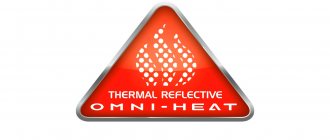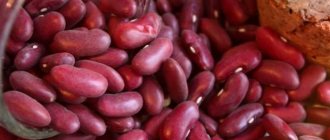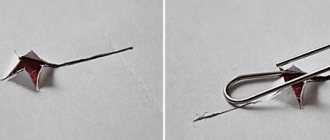What does Low Frost mean in a refrigerator?
The phrase is translated into Russian as “low frost.” The technology involves placing the evaporator behind the internal walls of the freezer along the entire length of the boundaries. It is considered as an intermediate form of a drip cooling system, operating on the “freeze-thaw” principle, and No Frost, which eliminates manual defrosting of the unit.
Mechanism of action of Low Frost:
- the freezer is equipped with double walls, so the evaporator has no tubes;
- the refrigerant is supplied directly inside the heat exchange element, where it evaporates, and fills the entire volume of the refrigerator part;
- There is a gradual decrease in the temperature of the evaporator, which allows the walls of the freezer to cool evenly.
In comparison with defrosting systems of older units, the following advantages of Low Frost technology can be highlighted:
- minimal temperature changes that do not allow ice build-up to form on the walls of the refrigerator;
- slow and uniform cooling of the inner surface of the freezer;
- the difference between the air temperature inside the chamber and its walls is insignificant;
- the thin thickness of the ice layer makes it almost invisible. There are no problems with pulling out drawers or accessing products;
- absence of frost inside the chamber due to the low concentration of condensate;
- complete defrosting is carried out no more often than 1 r. in year. The time required for the procedure is 2 hours. Upon completion, hygienic cleaning is carried out;
- creating conditions that allow you to maintain the freshness of products for a long time by supplying cold behind the camera machine.
Attention! The difference in temperature between the upper and lower shelves is 5 - 8 degrees.
Some users also consider the need for defrosting to be a disadvantage, since condensation forms on the inner surface of the refrigerator compartment.
The great popularity of refrigerators with Low Frost is due to the insignificant impact of the cost of technology on the price of the unit, minimal changes in design, and an increase in internal space in comparison with No Frost.
Video: Low Frost technology
Low Frost technology
Watch this video on YouTube
Features of refrigerators with drip defrosting
This option is attractive due to its simplicity and effectiveness. Such models are equipped with an “alarm”.
As soon as unfavorable conditions form in the refrigerator, the device gives a signal notifying the owner of the need to defrost.
Behind the back wall of the refrigerator there is an evaporator that acts as a distributor. Condensation forms on it, flowing smoothly into the container.
Flaws:
- Long defrosting process compared to the automatic version of the device;
- Such a system involves completely turning off the refrigerator. You will need to defrost food over and over again to complete the task;
- Defrosting must be done more often than required.
READ MORE: 20 best dishwashers - 2021 ranking (Top 20)
Refrigerator Bosch Low Frost
The German company Bosch is the main developer of such a system. In the ranking of the best devices with Low Frost, model KGV39VK23R takes first place. The characteristics of the unit are presented in the table below.
Attention! The refrigerator is assembled in Russia at a plant near St. Petersburg. The Bosch concern provides components, and its representative office evaluates the technical condition of the assembled units.
The advantages include stylish design, quiet operation, and impressive internal volume. The downside is the long adaptation to new environmental temperature conditions.
Among refrigerators with a Low Frost cooling system, I advise you to pay attention to the SHARP unit model SJ-B132ZR-WH, which has no deficiencies identified. The advantages include the build quality, materials, and low noise level.
SIEMENS produces a unit with similar technology, KI 87SAF30 R. It is made of stainless steel and features the ability to adjust the temperature mode in the fruit compartment. The only drawback is the small volume.
Difference between Low Frost and No Frost
As discussed above, refrigerators with Low Frost technology have a built-in evaporator that cools the entire perimeter of the freezer. By maintaining a certain level of temperature and humidity of the device, it slows down the process of ice formation on its internal surface. A thin layer of ice can be easily removed during hygienic cleaning.
Attention! The No Frost system is more advanced, as it eliminates the need for the owner to manually defrost the refrigerator compartment.
Cooling occurs according to the following principle:
- the fan evenly distributes air throughout the compartments of the unit, and the compressor pumps up the refrigerant;
- it passes into the evaporator through the condenser and capillary tube;
- boils, turns into gas and cools the surface of the evaporator;
- the temperature of the refrigerator compartment decreases after it drops to minus values in the freezer;
- The compressor turns off when the refrigerator temperature reaches -14 degrees.
The absence of ice and snow is due to the flow of a thin layer of ice into a special tank, where it dissolves due to the operation of the heating element and gradually evaporates.
The purpose of developing both systems is to relieve refrigerator users from having to carry out frequent defrosting procedures. At the same time, they have differences in the design mechanism, the principle of operation, which with No Frost involves the formation of cold flows using a fan, and with Low Frost - by placing the evaporator behind the walls of the freezer. In the first case, the automated process eliminates the need for defrosting, and in the second, it is enough to do it once. in year.
When choosing a device, you need to know its disadvantages. The disadvantages of No Frost include:
- noisy operation of the cooling system elements when placed in a room with poor sound insulation;
- high energy consumption;
- the need to package food before putting it in the refrigerator. Lack of moisture inside the chamber will cause uncovered food to dry out quickly.
The main disadvantage of Low Frost technology is the impossibility of using it in the refrigerator compartment. Ice is formed not only in the freezer, so 1 r. per year, the device must be defrosted manually.
No frost or low frost? what is better to choose - digital plus equipment store
2020-12-082020-12-08No Frost or Low Frost? What is better to choose - Digital Plus equipment storeassets/images/catalog6/1(1).jpg
Digital equipment store
A refrigerator that doesn’t need to be defrosted is an extremely convenient thing. The common “No Frost” feature really saves us a lot of time. Often, it is “No Frost” that becomes the decisive argument when choosing a specific model. Refrigerators with a slightly different “Low Frost” label are also available for sale. Is there any real difference? What to prefer? We will try to answer briefly.
No Frost: no manual defrosting
This “advanced” solution allows you to completely forget about the troublesome defrosting of your home refrigerator. Walls covered with thick ice will be a thing of the past. Under No Frost conditions, bacteria multiply more slowly and the shelf life will increase. The downside to this tempting technology is that it will increase energy consumption. The noise level will also increase. The latter applies more to inexpensive budget models.
One helpful tip: keep your food packaged. No Frost works effectively due to intensive air circulation - food left open will dry out. This will negatively affect their taste. It is not necessary to use containers. Ordinary plastic film will be sufficient.
Low Frost: there will be less ice
This technology does not completely relieve the owner from defrosting the refrigeration unit. The formation of ice slows down, and it “grows” in a relatively thin layer. Accordingly, defrosting will require significantly less time and effort than in the case of an “ordinary” refrigerator. You will still have to defrost, although very infrequently. The second disadvantage of this solution is its “limitedness”. Low Frost works exclusively in the freezer.
What to choose?
Both solutions are successful in their own way. “Maximum” No Frost is suitable for a neat person who does not forget to pack their food supplies well. Products in such a unit will last longer. If you don’t want to “mess around” with the film, then choose the “compromise” Low Frost technology. You won't see a thick icy build-up in the freezer. Manual defrosting with Low Frost will be required no more than once a year.
No Frost is in the lead
In practice, most buyers still prefer No Frost. Our store offers a wide selection of models that do not require manual defrosting. Reliable units with huge capacity are at your service. The large side by side refrigerator LG GR-M257 SGKR, for example, offers more than 800 liters. For a budget-conscious family, the BEKO CN 329120S model with a total capacity of 265 liters is quite suitable.
READ MORE: 20 unforgivable mistakes in makeup - Lifehacker
These are just two examples - there are plenty of tempting options. In the MaxVideo online store, it’s easy to look for a reliable, practical, spacious No Frost refrigerator without ruining your personal budget. Eliminating the hassle of defrosting is pleasantly affordable today!
Less frost in the refrigerator
A new feature of modern units is an upgrade of Low Frost technology. The main difference is the thermal insulation of the body, which reduces the energy consumption of the refrigerator.
Translated from English, Less Frost means “frost-free.” Its operating principle is to prevent the formation of ice on the walls of the freezer and food. In this case, a small amount of frost still appears, but the need for defrosting is reduced by 2 rubles.
When purchasing a refrigerator, do not be afraid to ask the seller what terms that you do not understand may mean. This may influence your choice. If you are not concerned about the need for manual defrosting 1 p. per year, then units with the Less Frost system will be a good option. Their cost is lower compared to No Frost devices, and the shelf life of products under such storage conditions is the same.
Do you want to understand better than others?
- Built-in refrigerators from the manufacturer AEG with No Frost: characteristics of the models - German appliances for any purpose, including household ones, are highly valued all over the world. High-tech refrigeration equipment is the main principle of the AEG brand, which was...
- Top 3 best two-chamber Pozis refrigerators with No Frost system: detailed review - No Frost is a system designed to prevent the formation of ice and frost. Full no frost implies that this type of work applies to both refrigeration and…
- LG No Frost refrigerator with bottom freezer: 20 photos + instructions - Refrigerator LG GA-B509CEWL / GA-B459CEWL / GA-B509MMQZ / GA-B509MESL / GA-B459MMDZ / GA-B459MMQZ / GA-B459MESL / GA-B509CEQZ / GA- B509CESL / GA-B509CECL / GA-B459CESL /…
- LG - No Frost - No Frost is a cooling system for the freezer and refrigerator compartments, which provides forced circulation of cold air and prevents the formation of ice on the walls...
- Is it necessary to defrost an LG No Frost refrigerator - It is a mistaken belief that refrigeration units equipped with an automatic defrosting function do not require special care. Defrost refrigerators with the No Frost system...











